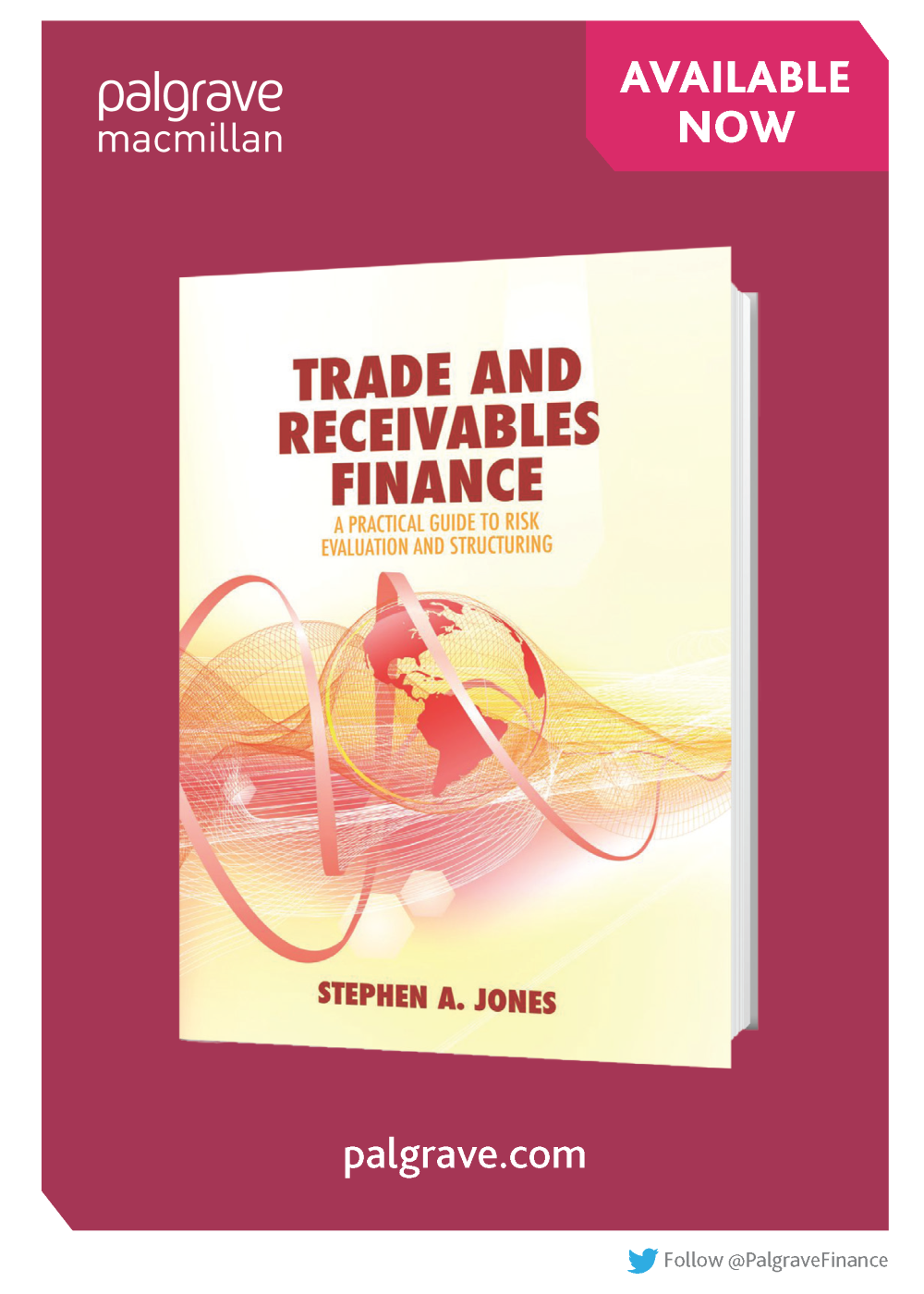
The below interview with Stephen Jones, Managing Director of AXS Trade Finance Limited, first appeared in the Summer 2019 edition of World Trade Matters. Stephen is a trainer, consultant, author and trade finance practitioner.
Why have you chosen to write this book?
Trade and receivables finance is a key differentiator in global trade. By accelerating cash flow and mitigating the risk of non-payment, exporters are able to grow sales by extending competitive trade credit to overseas buyers and enter new markets.
Knowledge of these products and financing techniques is concentrated into a relatively small number of banking specialists. Furthermore, there is a danger that this already scarce expertise will diminish as experienced banking personnel leave the profession or retire.
It is vitally important that companies who trade internationally have access to the tools that will best equip them to shape their payment terms to mitigate commercial and political risks and determine the right type of funding to fulfil that hard won export order.
The aim of this book is to make this specialist knowledge accessible to a wider cross section of banking and business professionals.
What makes this book different?
The contents are based on more than 40 years of experience in the trade finance industry and incorporates example wordings, specimen documents, financier checklists and diagrams.
This book is the first of its kind to provide detailed ‘hands on’ guidance for the evaluation of risk, structuring of trade products and the formulation of documentary and open account financing solutions.
By gaining a better understanding on how banks evaluate requests for trade related facilities, the information they need and the range of trade products and types of funding available, exporters and importers will be able to have more meaningful discussions with banks and financiers. This will help them to secure the support they need.
The book carries the endorsement of the London Institute of Banking and Finance.
Why trade and receivables finance?
An importer or exporter will often require greater levels of banking facilities because of the extended nature of their trade cycle. This often outstrips credit appetite offered by conventional lending products such as bank overdraft.
The book distinguishes between traditional ‘balance sheet’ lending and self-liquidating trade and receivables financing facilities. When correctly evaluated and constructed, trade finance can reduce the risk of default for the financier whilst providing a company with a scalable source of funding linked to the value of orders received and not by the size of their balance sheet and available security.
The amount of funding is therefore determined by the transactional needs of the company rather than fixed by the assessment of their ability to repay the financier.
How relevant is the book for today’s challenges?
The article ‘Making the Case for International Trade’ in the Spring edition of ‘World Trade Matters’ highlighted the need to earn a living by trading with other nations.
The wider and deeper education of banks and companies on the commercial and financial aspects of cross border trade and how to structure letters of credit, demand guarantees, receivables and supply chain finance solutions is necessary if we are to ‘up our game’.
How will this book help banks and financiers to support exporters?
The alignment of funding to enable the purchase of raw materials, components and finished goods to fulfil an order and the capture of the subsequent sale proceeds to repay the financier requires specialist knowledge and skills.
Written as a ‘how to’ reference manual, the book takes the reader on a journey from the commercial aspects of international trade, the evaluation of trade-based credit risk, the use, form and operation of trade products, to the formulation of open account receivables and payables financing techniques.
It offers guidance on how to write a compelling credit application to engage support of the risk underwriters and provides sample extracts of trade facility documentation. For example, the ‘trade proposition evaluation checklist’ will not only help a financier to obtain a fuller picture of the proposed trade transaction but also aid a company’s understanding of the information required to gain financial support. This, together with an explanation of the range of payment and financing mechanisms, and how these should be structured will empower companies in their discussion with commercial parties and banks.
What’s next?

A follow up book entitled ‘The Trade and Receivables Finance Companion: A Collection of Case Studies and Solutions’ will be published by Palgrave Macmillan shortly.
Based on the author’s personal experience, the ‘Companion’ applies the techniques described in ‘Trade and Receivables Finance: A Practical Guide to Risk Evaluation and Structuring’ to an extensive range of international trade scenarios. Practical solutions are discussed and presented through a specially selected collection of 22 case studies.
These books provide an unrivalled and highly practical set of manuals for anyone involved in international trade, from sales, risk, finance and operations.
Stephen’s books are available on the publisher’s web site and on Amazon
Available from Amazon and the Palgrave Macmillan web site:
Trade and Receivables Finance: A Practical Guide to Risk Evaluation and Structuring
https://www.palgrave.com/gb/book/9783319957340
The Trade and Receivables Finance Companion: A Collection of Case Studies and Solutions

